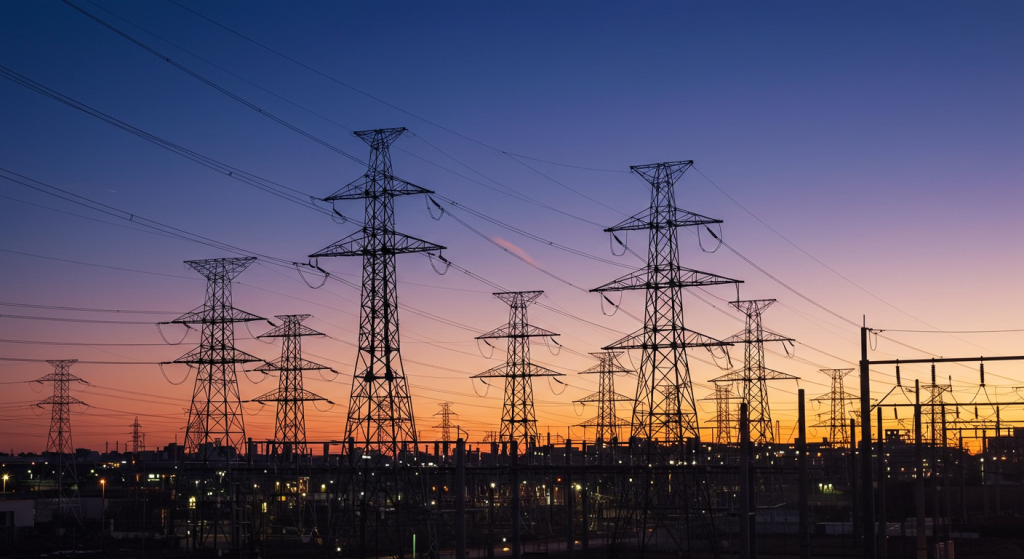Electrical Infrastructure Towers: From Design to Future
2025-04-21
What are Electrical Infrastructure Towers?
- Electrical infrastructure towers are built to withstand weather extremes while maintaining a high safety standard in electricity transmission. Furthermore, their design is tailored to the terrain and ecological situation of the site of construction. The most common designs include steel lattice towers, tubular steel poles, and monopole towers.
- Along with the features above, these towers have three distinguishing properties: the altitude at which the supported lines cross. There are different terminals where the connections are made, thus providing various setups for the towers. Also, depending on which country’s power grid they are positioned in, the framework of the grid will differ.
Electrical Infrastructure Towers: The Backbone of Power Transmission
Extending across the global power network, electrical infrastructure towers or power transmission towers are frequently found in the world’s energy framework. These structures facilitate the movement of electricity across large geographical areas by supporting high-voltage transmission lines. Power generation plants need to be connected to substations and later to the households and industrial units, which is where these towers come into the picture. Various types of electrical towers differ in construction, design, technology, and application.
The Role of Power Transmission Towers in Our Lives
Power towers find application in numerous places, the most important one being their utilization in the transportation of electric power over long distances. Power towers are highly necessary for electricity transmission. They also aid:
• Safety Measures:
Using power towers helps in avoiding any possible collisions of trees, cars, and buildings, which can put the transmission lines in danger.
• Sturdiness:
The towers should be able to withstand severe external conditions such as storms, winds, and even lightning.
Power transmission is highly important because it reduces the amount of energy lost in the process, as well as allowing electricity to be transmitted over longer distances. The utilization of electrical power towers becomes incredibly important when constructing big towers and skyscrapers, where enhancing electrical power becomes an essential feature.
Block Factors of Electric Power Towers
Power transmission requires the use of several components that work together to make sure there is a reliable and stable power source. About power block factors, the insulators and conductors work as a group to provide a great effect for the entire system.
1. Insulators
The process of vertical power tower erection requires the use of conductors. Each conductor should be able to move freely without restriction. This is why a strong electrical wire above the power transmission tower serves as an elastically fixed wire suspension, enabling free movement of the power line. In cases of both medium power usage and high voltage uses, utilize suspension insulators.

2. Conductors
Conductors are best made using metals such as aluminum and copper. Suspend power lines from the top of the tower using cereal tubes made from copper and surrounded by single-edge blades, which serve as current wires, enabling electricity to pass from one end to another.
3. Ground Wires
The ground wire's primary purpose is to protect the transmission system from the direct effects of lightning bolt strikes. These wires aid in safely directing the electric charge to the ground, thus protecting the transmission lines from damage.
4. Crossarms
Crossarms are static horizontal beams responsible for bearing the conductors. They assist in the weight distribution of the conductors and also further strengthen the tower.
5. Foundation
The foundation structure of an electrical tower is highly dependent on the balance and stability of the tower. These foundations are built to support the weight of the tower in addition to the force that will be applied by the transmission lines and environmental factors.
The Role of Electrical Towers in the Electrical Grid
The electrical towers are crucial to a utility grid’s network system. This includes everything from transmission lines and substations to transformers that transport electricity to homes or companies. The high-voltage electrical towers enable long-range electricity transport by supporting high-voltage power lines that carry electricity to different regions or countries.
1. Generation and Distribution of Power
The energy generated at power plants is transmitted via high-voltage lines, which is relayed via electrical towers. After arriving at the substation, the energy is stepped down to lower voltages and distributed through distribution towers to residential and commercial zones.
2. Grid Infrastructure Towers
As the name suggests, grid infrastructure towers are specifically built to bear the weight and tension of the power transmission lines serving as the spine of the electrical grid. It is these towers that are built to manage several circuits at the same time, ensuring the free flow of electricity through the grid.
3. Substation Towers
Substation towers link the power lines with the substations, where the voltage is decreased before being released for household and industrial usage. Due to their importance in electrical load management, these towers serve a vital purpose.
Electrical Tower Construction and Maintenance
The construction of Electric and Telecommunication towers includes the selection of the appropriate site, the entire survey of the site, and finally, the erection of the tower. First, an engineer goes out and surveys the site, then they decide on what type of tower is rational to use in the given area. Then follows the construction of the needed support frame and, finally, the superstructure assembly. Once the power transmission towers have been installed, periodic checks have to be carried out for the smooth functioning of the electrical transmission system. This involves inspecting the towers for possible damage, checking if the components are functional, and verifying that the power lines are operational.
- Safety Issues Related to the Construction of Electrical Towers
Carrying out the construction and maintenance of electrical towers and other related structures requires giving complete attention to safety. Safety rules must be obeyed, such as working with proper headgear like helmets, and safety gloves. Moreover, the personnel who will be doing the work must be trained in identifying and controlling electrical dangers.
- The Effect of Electrical Towers on the Environment
Inasmuch as there is a need to have electrical towers for growing power needs, these towers cause some environmental concerns. The construction of power lines and towers may interfere with some natural environments, and the towers themselves may have an untold visual impact in certain scenic locations. Nevertheless, the use of aesthetically acceptable tower designs, as well as the placing of power lines underground, is alleviating some of these problems.
Conclusion:
The modern power systems we have rely on essential electrical infrastructure towers. From facilitating the safe and dependable distribution of electricity to sustaining high-voltage power transmission lines, these grids are important components of energy networks worldwide. To learn about these towers and maintenance, and construction services, visit XY Tower.

Hey, I’m Chunjian Shu
"X.Y. Tower: Reliable, innovative solutions for high-quality towers and electrical equipment with professional service.
